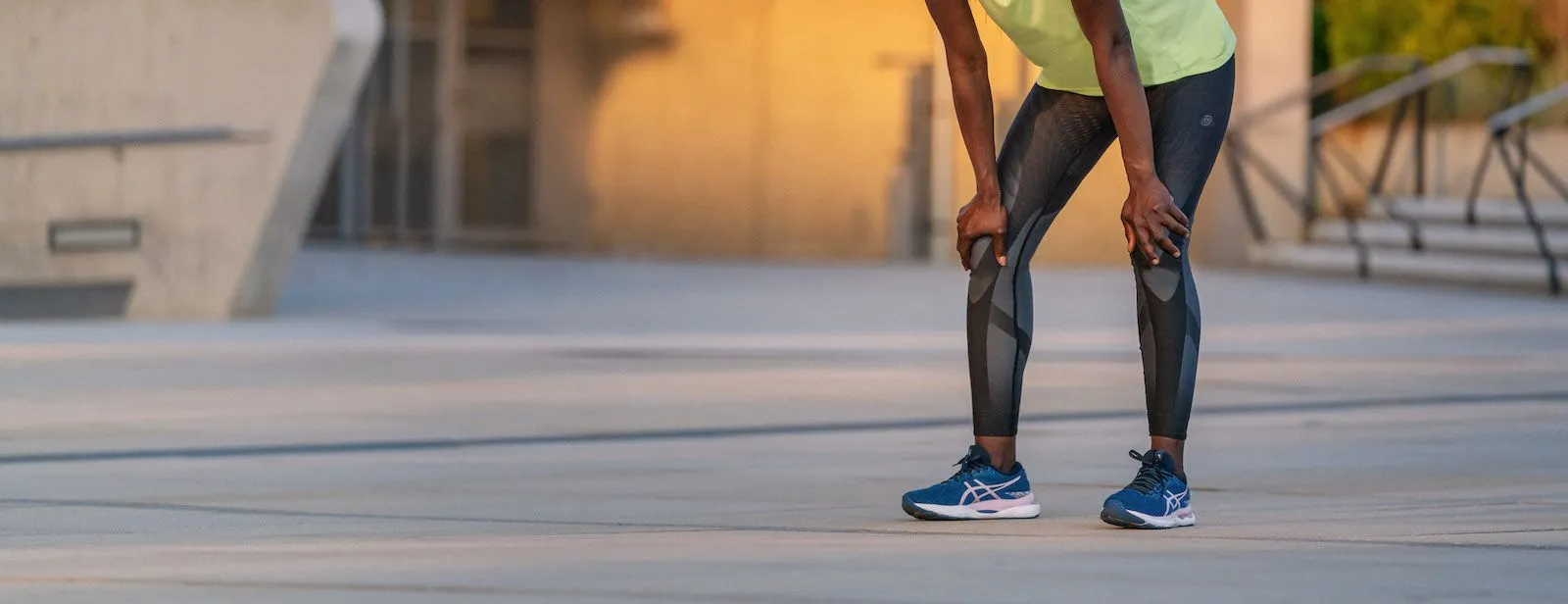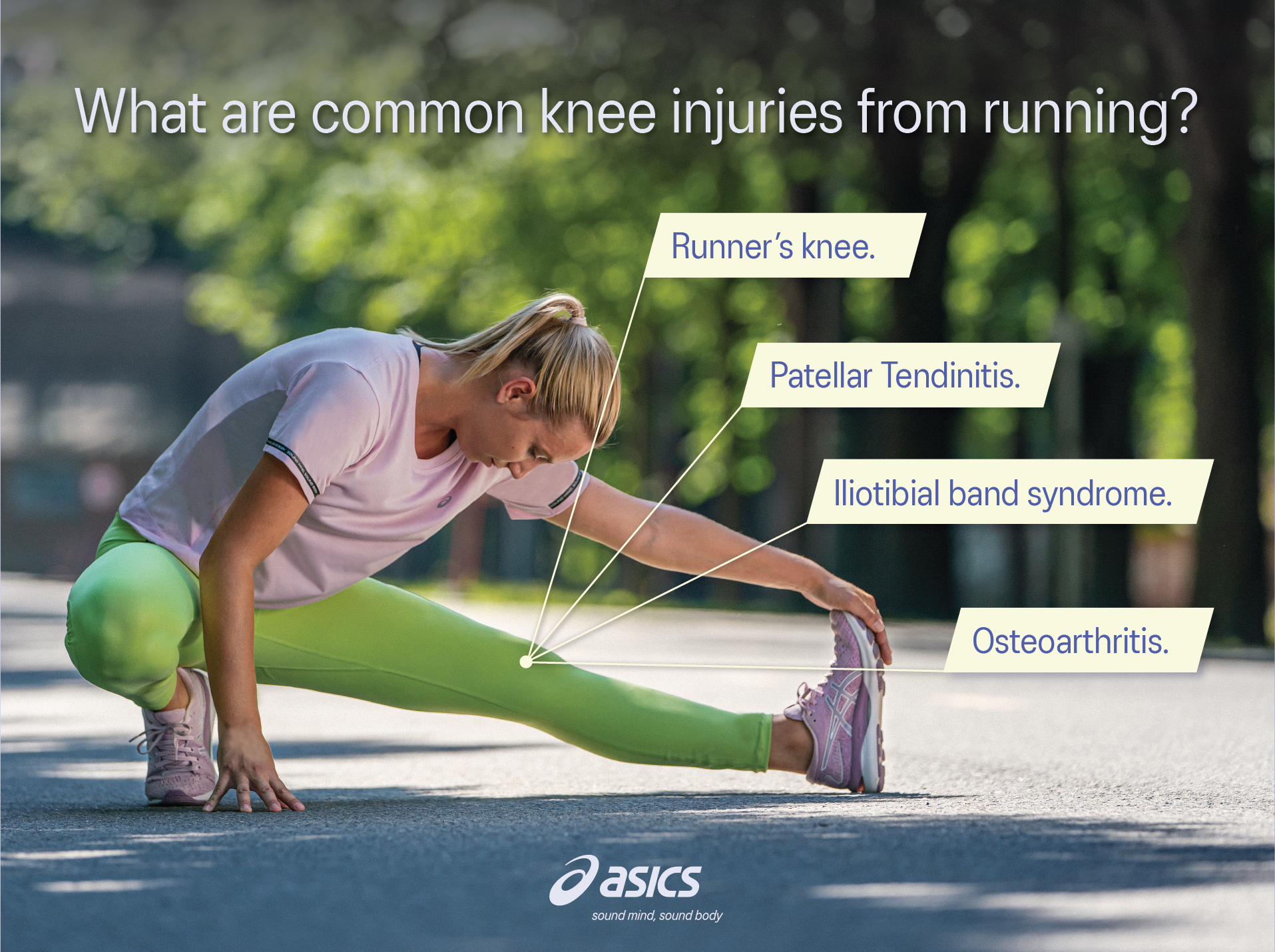
Choosing Running Shoes for Bad Knees
July 14, 2022 / ASICS Australia
Running should be an enjoyable activity. In order to keep it this way, it’s important to consider how your knees are affected.
Athletes can experience knee pain as a result of wearing inadequate footwear, having improper form or pushing themselves too hard.
How does running affect your knees?
High-impact activities such as running can place a lot of stress on the joints and knees. If not treated properly, the strain could keep you from maintaining your running schedule, in turn limiting the amount of progress you’re able to make.
Is running bad for your joints?
Poor running posture and inappropriate gear may lead to knee and joint pain. Overall, running isn’t an exercise to avoid because you’re concerned about knee and joint pain. In fact, studies have shown that running actually helps improve knee cartilage.
Different types of knee injuries from running
Even if you’ve never experienced a knee injury from running, it’s possible you may encounter this pain at some point. This discomfort may be the result of one of the following injuries:

- Osteoarthritis. The most common form of arthritis is osteoarthritis . It’s often found in hands, hips and knees.
- Runner’s knee. Also known as patellofemoral pain syndrome , this is a dull pain in the front area of the knee. Athletes with this condition often stop running until the pain dissipates.
- Iliotibial band syndrome. The iliotibial band is a thick area of tissue that runs along the thigh. Friction can occur as you exercise, causing pain. This can slow down a runner's routine, requiring icing of the area and pain medication. Consult your healthcare provider regarding proper care.
- Patellar Tendinitis. Also referred to as jumper’s knee , this occurs when your leg muscle contracts from surface contact. Athletes can still perform, but should be mindful of any inflammation around the knees. Tendons can tear due to overuse if left untreated.
4 tips that may help prevent knee pain and injuries from running
To help reduce the risk of knee discomfort, you can apply the following tips before, during and after your exercise.
1. Practice the recommended posture for running
A strong posture can increase your performance and help limit the risk of knee and joint discomfort. Running incorporates muscle groups across your body, and practicing the recommended technique during each session can strengthen those muscles.
“It engages the muscles of the core (glutes, obliques, adductors) and the muscles around the pelvis (hip flexors, glutes) which contributes to better posture,” said Miguel Fragoso , an ASICS FrontRunner member.
2. Stretch your muscles before running
Stretching is an important practice to incorporate into your running routine, especially if you’ve had injuries in the past. It helps you focus on specific areas of your body that are affected by running such as your glutes. Consider hamstring sweeps or high knees to warm-up before a run .
3. Ice your knees after a run
Inflammation of the knee joint and surrounding cartilage is especially common . To help reduce any soreness or pain within this area, use an ice pack or bag of frozen vegetables to gently ice the affected area.
4. Stay hydrated throughout your run
Drinking water throughout your exercise provides energy to your cells, regulates body temperature and supports healthy joints. By staying hydrated you can reduce cramping, which could slow your pace.
Also recognise that lactic acid builds up due to dehydration. Staying hydrated will minimise lactic acid buildup in your joints, and in turn, may help to prevent knee discomfort while running.
What to look for in running shoes for knee and joint support
Wearing the recommended running shoes for knee support could help decrease your time spent in recovery after running.
“Don’t ignore the importance of good [gear and] materials for your run. Your feet and knees will thank you immensely for the investment made in shoes specific to the running you practice,” said Priscila Gonçalves , an ASICS FrontRunner member.
When it comes to finding running shoes for knee support, you may want to consider looking for the following features:
Enhanced cushioning and highly responsive
For enhanced knee and joint support, cushioning is an essential feature to look for, as it helps absorb the shock runners place on their feet and ultimately their joints. Runners with bad knees or joint discomfort may also want to look for footwear that responds to the weight placed on certain areas of the foot.
Improved stability
Stability is key when it comes to reducing knee and joint discomfort after your exercise. Running shoes with improved stability can provide adaptive support and smoother transitions during short and long distance runs, regardless of the type of terrain.
Please note: This blog is not intended to be a substitute for professional medical advice, diagnosis, or treatment. Always seek the advice of your physician or other qualified health provider with any questions you may have regarding a medical condition.